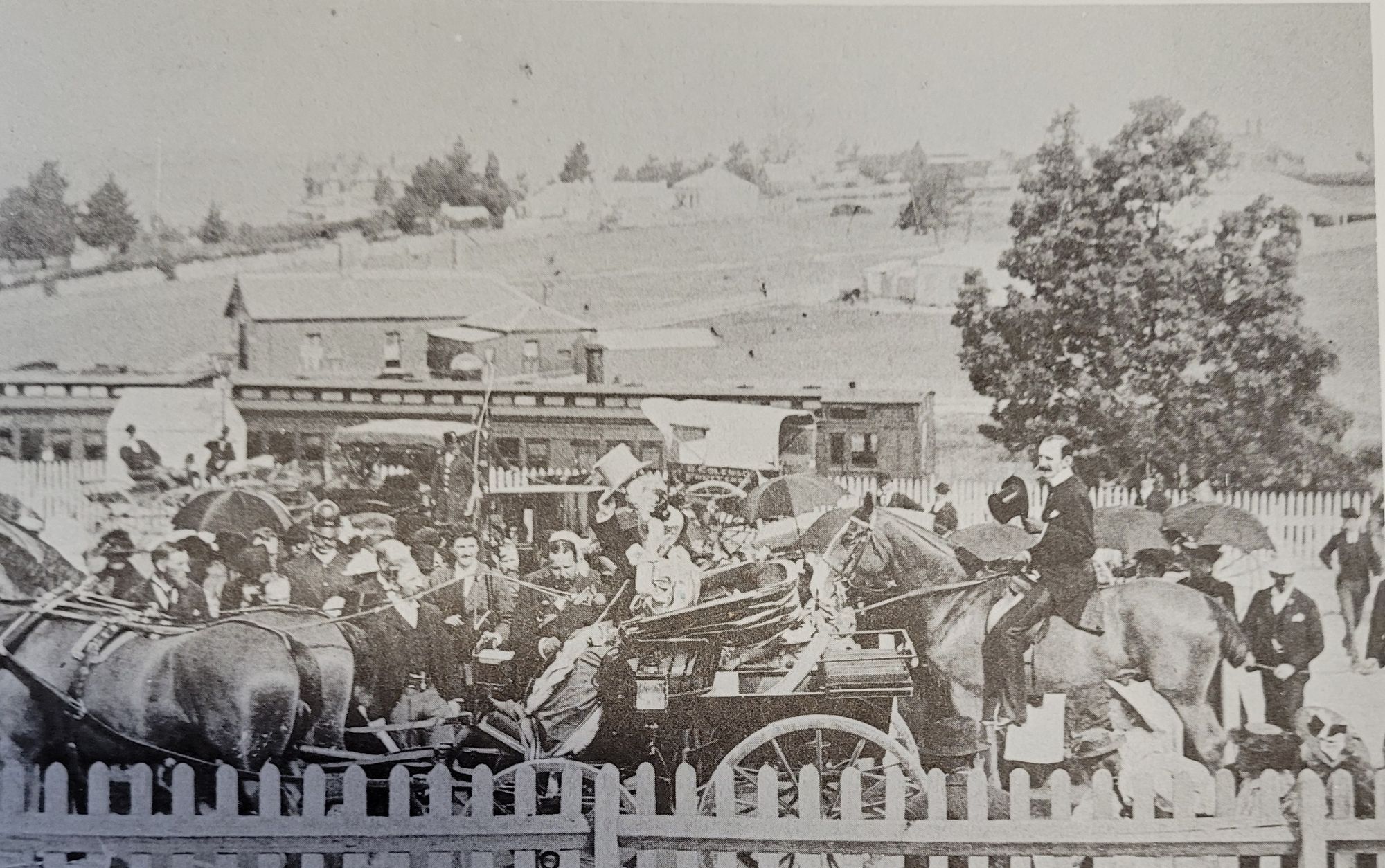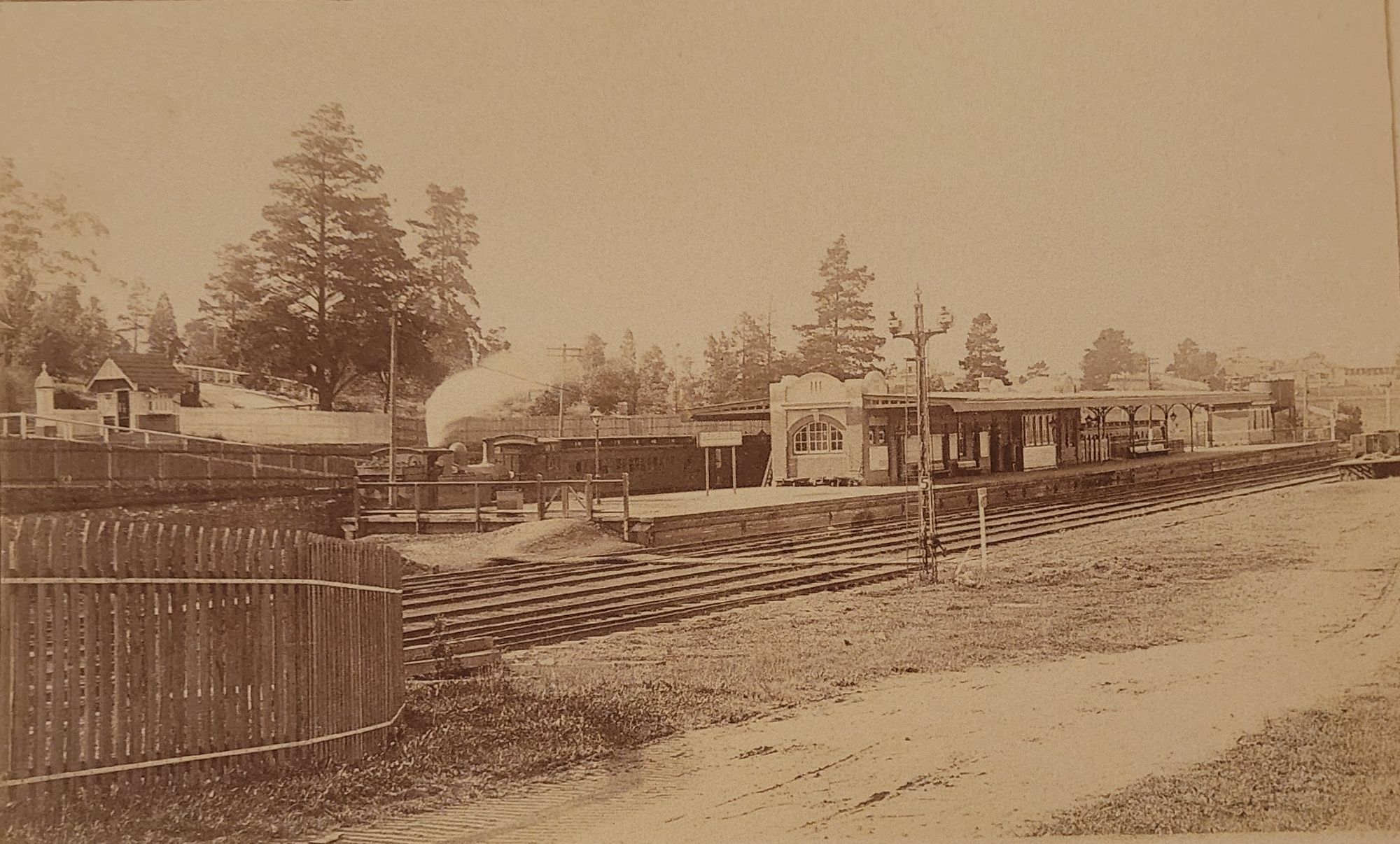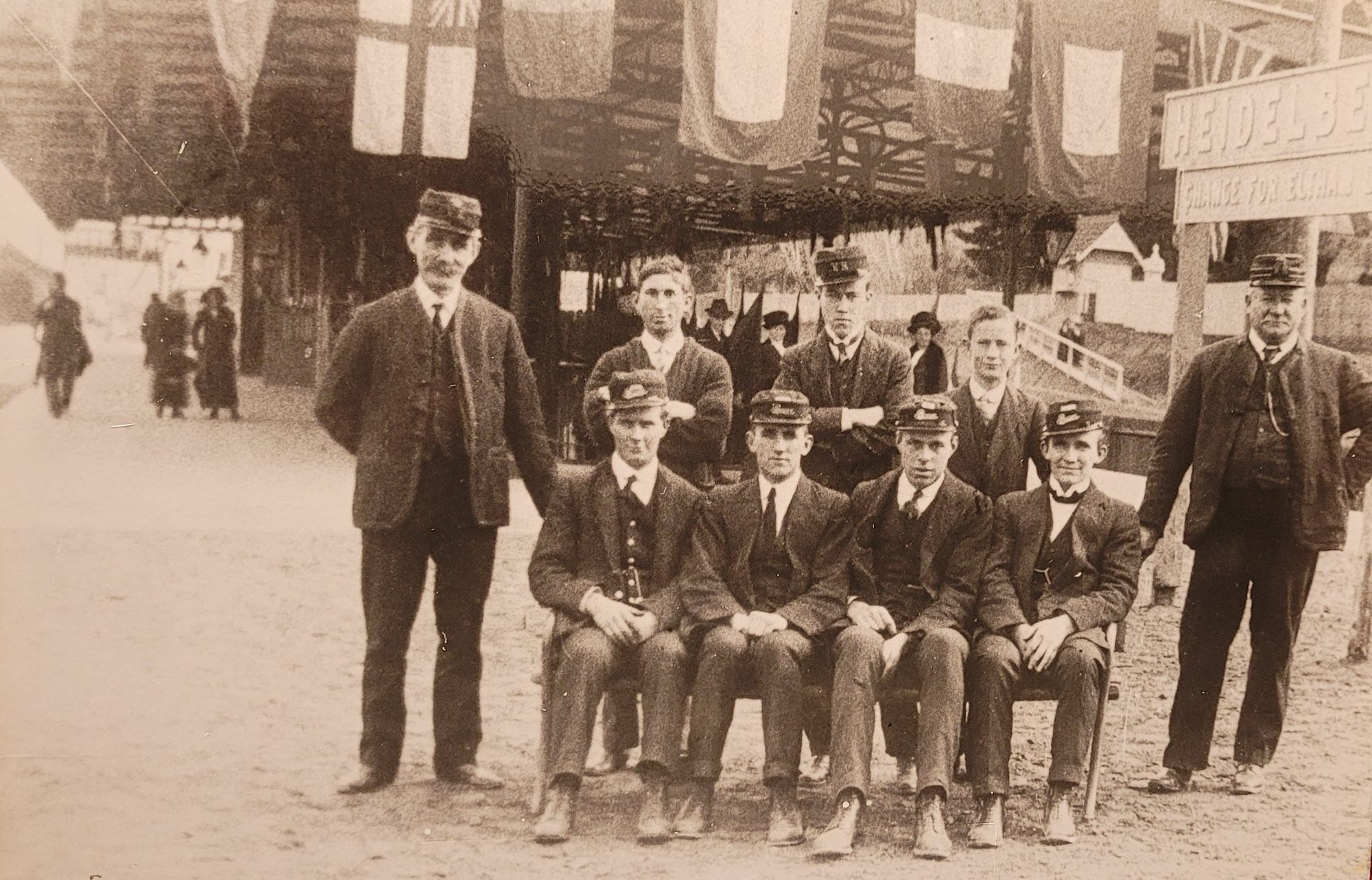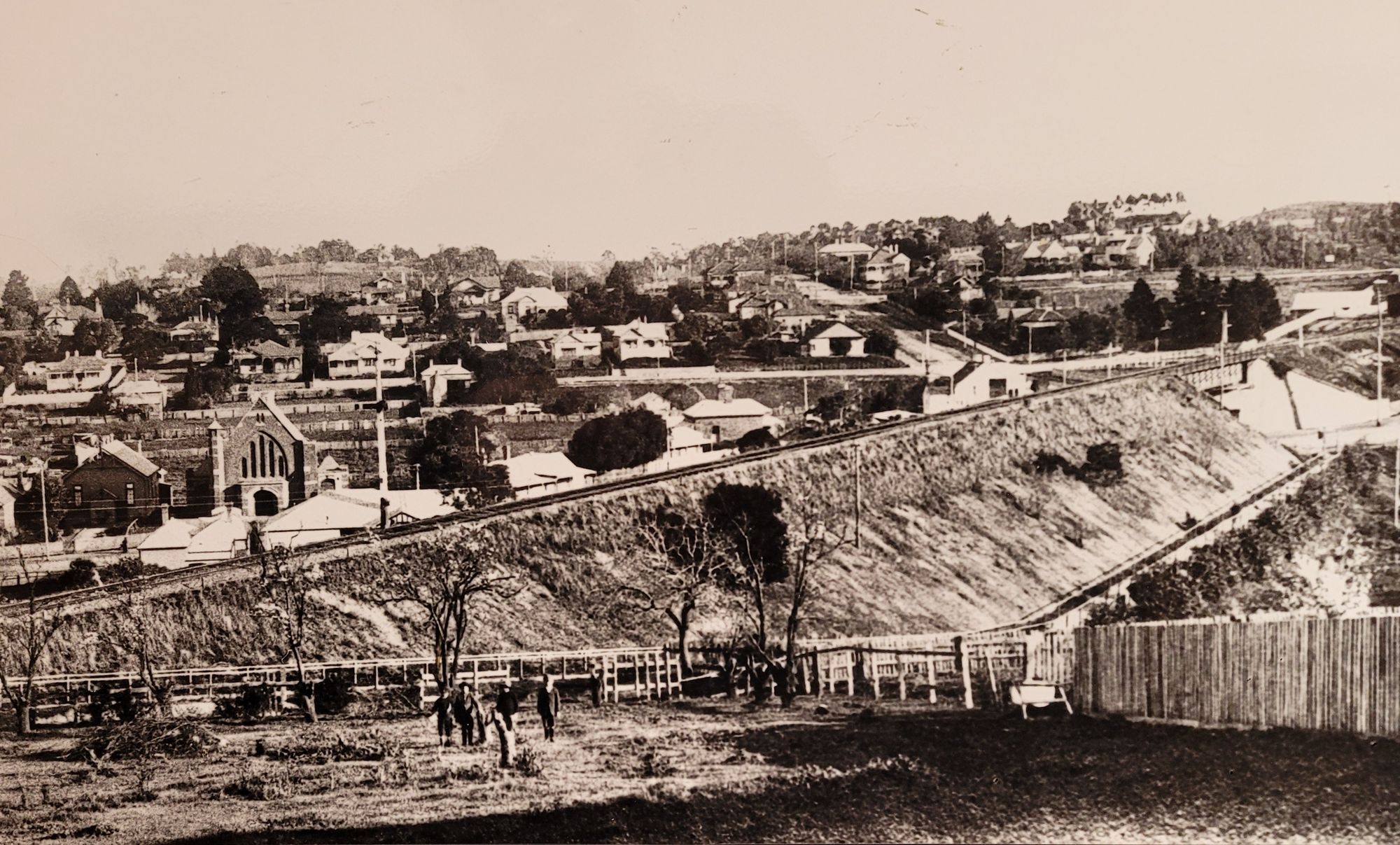Celebrating Progress

Public agitation led to the (re)replacement of the original Heidelberg Station building just 25 years after the (then) terminus station was opened.
The first Heidelberg Station was described as "a primitive leanto measuring 10 ft. x 4ft. containing a ticket office, but providing no shelter for passengers".
In 1896 the Governor of Victoria opened a replacement Heidelberg Railway Station.

The creation of a "direct line" from Princes Bridge in 1902 made Heidelberg immediately "a famous picnic spot". On the King's Birthday holiday approximately 6000 tickets were collected at Heidelberg; Boxing Day despite being extremely hot drew 3000 holiday makers; then New Years Day 4000 came out to play.
Tourists arriving at Heidelberg by train were reported as refusing to alight due to a lack of shelter from rain.
Amazing that the original station was built without passenger facilities! The strong growth of passenger numbers caused a rethink.
The "Heidelberg News" reported "that the visitors were up to their usual quality - all the respectable classes - the larrikin element being agreeably conspicuous by its absence."
The current "island" platform, building & subway was opened in 1913.

A tinge of disdain, bordering on sarcasm, colours the Age report.
(Excerpts from HHS publication Transport in Heidelberg - Cyril Cummins - 1976)
Oh Happy Days
The Age, 02.09.1913, Page 9
THE RAILWAYS.
NEW HEIDELBERG STATION OPENED.
Heidelberg was en fete yesterday, the occasion of the opening by the Premier of the new brick railway station which has been erected at a cost of £13,000.
It was a time of much rejoicing.
The whole countryside seemed to be present, schools throughout the shire had been granted a holiday and business and public men entered into the spirit of the occasion in a variety of ways.
After a glance at the dingy structure which previously served the requirements of a station, but admittedly very badly, and which lay apparently abandoned near the permanent way, one can join with residents in such a display of exuberance.
Lines of bunting surrounded the new building, and the decorations were carried down the principal thoroughfare, finishing singularly enough just where new asphalting and gravelling commenced.

As was anticipated, no doubt, the Premier had an uninterrupted view of it, and said an encouraging word regarding municipal enterprise.
It was made clear during the speeches that Heidelberg quite deserved its new asset, the railway station.
The residents had dipped deeply into the Treasury, Mr. Watt remarked, but he was convinced by ocular demonstration apart from official figures that the expenditure was quite justified.
Business, as represented in the general revenue from the station, had increased 242 per cent, in the last 10 years, and according to Mr. J. G. Membrey, the district member of Parliament, the last five years’ “passenger journeys" had increased in number by 2,500,000 over the previous five years.
At the shire hall, the company of visitors was entertained by Cr. W. Rank, president of the shire, and another round of speeches, flattering to the Government and the local member, was given.
Subsequently sports were held at the recreation reserve.
(Contributed by Nilss)
I infer "ocular demonstration" is journalistic jargon for "the look of the place".
Pushing the line beyond Heidelberg greatly increased revenues for the railways, but the costs of the embankments, tunnels and cuttings to keep a manageable gradient to Hurstbridge were very high.

In 1902 the line to Eltham was created; Rosanna (then called Upper Heidelberg) was added as a "flag station" in 1905 - it was so remote and sparsely settled any passenger on the platform needed to "flag down" the approaching train.
At night a lantern was used.
P.S. : in this era the part of Eaglemont between Lower Heidelberg Road and the river (Keam's farm earlier) was known as Lower Heidelberg.
Hence the terms Upper Heidelberg Road, and Lower Heidelberg Road, referred to destinations - not elevations.
Member discussion